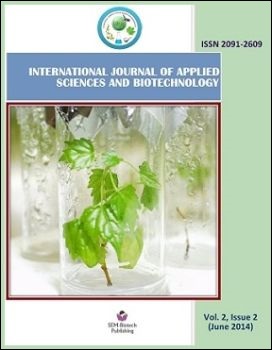In Vitro Embryo Production and Transfer of Bubaline Embryos using Oocytes Derived from Transvaginal Ultrasound-Guided Follicular Aspiration (TUFA)
DOI:
https://doi.org/10.3126/ijasbt.v2i2.10369Keywords:
Transvaginal, Ultrasound-guided Follicular Aspiration Bubaline embryos, oocytes, IVEPAbstract
Transvaginal ultrasound-guided follicular aspiration (TUFA) has become a popular tool for embryo production in vitro due to its high degree of repeatability in terms of recovering oocytes from live animals. In Study 1, the quantity and quality of oocytes from Bulgarian Murrah buffalo cows (n=10) of varying ages (Group 1, 8-12; and Group 2, 13-17 years) were assessed. Group 1 buffalo donor cows yielded significantly higher (P<0.05) number of oocytes vs Group 2 buffalo donor cows (71 vs 29 oocytes, respectively), though in terms of oocyte quality, no difference was observed.
In Study 2, oocytes collected (n=100) in Study 1 were matured, fertilized in vitro and the resulting zygotes were cultured which developed to blastocyst stage embryos. The maturation, fertilization and blastocyst development rates obtained were 53.0%, 40.0% and 32.5%, respectively. In Study 3, the viability of resulting blastocyst stage embryos was determined by transferring to recipient cows. Of 10 recipients 1 got pregnant and delivered a 35 kg male calf after 310 days gestation period. Overall, the results of the studies conducted demonstrated the potential of TUFA technology in the in vitro production of embryos which eventually could be used in the production of live offspring.
DOI: http://dx.doi.org/10.3126/ijasbt.v2i2.10369
Int J Appl Sci Biotechnol, Vol. 2(2): 180-184




